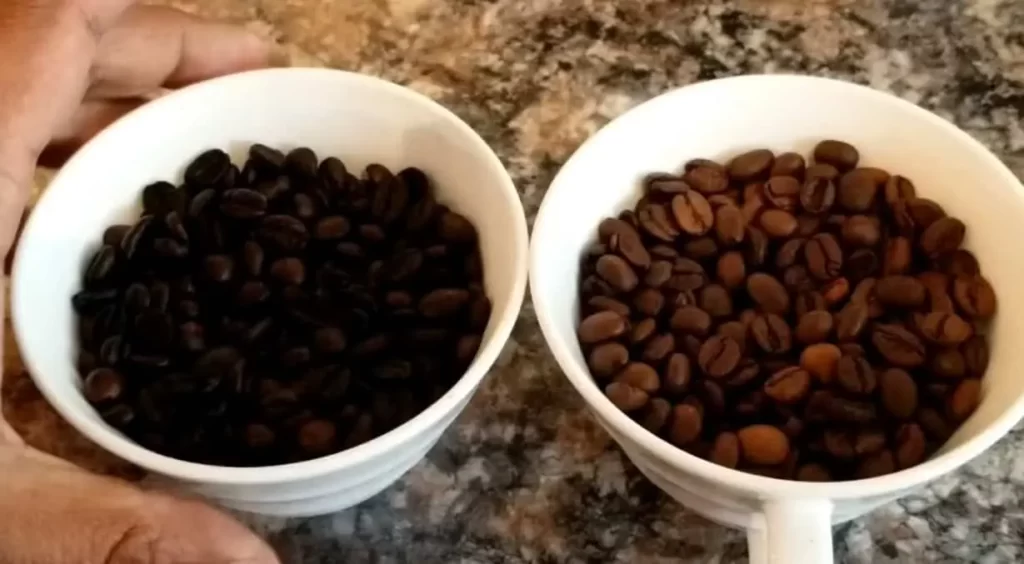As coffee lovers, we all know that the process of roasting coffee beans is a crucial step in unlocking the unique flavors and aromas that make each cup of coffee a delightful experience. But what about re-roasting? Can you really give your beans a second chance on the roasting journey to achieve even better results?
In this comprehensive guide, we will explore the truth behind re-roasting coffee beans, diving into the science, techniques, and pros and cons of this controversial topic.
Roasting coffee beans is not just an art, but also a science. It involves a complex series of chemical reactions that transform green coffee beans into the aromatic and flavorful brown beans we all know and love. The roasting process is typically divided into different stages, each with its own characteristics and impact on the final cup of coffee. Temperature, timing, and airflow all play crucial roles in determining the flavor and aroma profiles of the roasted beans.
So, if you’ve ever wondered about the truth behind re-roasting coffee beans, grab your favorite cup of joe and let’s dive in! In the following sections, we will uncover the facts, debunk the myths, and shed light on the art and science of re-roasting coffee beans.
The Science of Coffee Bean Roasting
At the heart of coffee bean roasting lies a fascinating scientific process that involves a series of chemical reactions and physical changes. Understanding the science behind coffee bean roasting can help us appreciate the complexities and nuances of re-roasting.
Maillard Reaction: The Maillard reaction is one of the key chemical reactions that occur during coffee bean roasting. It is a complex process that involves the interaction between amino acids and reducing sugars, resulting in the formation of numerous flavor compounds that contribute to the unique aroma and taste of coffee. The Maillard reaction is responsible for producing flavors such as caramel, chocolate, and nutty notes that are characteristic of well-roasted coffee beans.
Caramelization: Caramelization is another important chemical reaction that takes place during coffee bean roasting. It is the process of breaking down sugars in the coffee beans, resulting in the formation of caramel-like compounds that add sweetness and depth to the flavor profile of the coffee. Caramelization is responsible for producing flavors such as toffee, brown sugar, and molasses notes that are often associated with darker roasts.
Pyrolysis: Pyrolysis is a process that occurs at higher temperatures during coffee bean roasting, where the beans undergo thermal decomposition. This process leads to the release of various volatile compounds, including acids, aldehydes, and ketones, which contribute to the aroma and flavor of coffee. The types and amounts of these volatile compounds formed during roasting depend on factors such as the roast level, time, and temperature.
Moisture Loss: Coffee beans contain a significant amount of moisture, and roasting is a process that involves driving off this moisture from the beans. As the beans heat up, the moisture inside them turns into steam and escapes through the pores in the beans. This moisture loss affects the physical properties of the beans, such as their weight, density, and color, and has a direct impact on the final flavor and aroma of the coffee.
Bean Expansion: During roasting, coffee beans undergo a physical change known as bean expansion. As the beans heat up, they expand in size and weight, reaching their maximum size at a certain point in the roasting process. Bean expansion is an important factor that affects the density, texture, and flavor of the coffee beans.
In the next section, we will delve into the concept of re-roasting and explore the pros and cons of this practice. Stay tuned for an in-depth analysis of whether re-roasting is a viable option for unlocking new flavor possibilities in coffee beans.
The Concept of Re-Roasting
Re-roasting, as the name suggests, involves roasting coffee beans for a second time after the initial roasting process. This practice has gained attention among coffee enthusiasts and roasters who are eager to experiment with different flavors and profiles in their coffee. However, re-roasting is a controversial and debated topic in the coffee world, with varying opinions on its effectiveness and potential drawbacks.

Why Re-Roasting: The concept of re-roasting stems from the idea that coffee beans can undergo further development and transformation in flavor and aroma through additional roasting. Some coffee roasters believe that re-roasting can unlock new flavor possibilities, enhance certain characteristics of the coffee, and create unique profiles that cannot be achieved with a single roast. Re-roasting is often considered as a way to experiment and push the boundaries of coffee flavor, catering to the ever-evolving taste preferences of consumers.
Potential Benefits of Re-Roasting: Proponents of re-roasting claim that it can result in distinct flavor profiles that are not achievable with a single roast. Re-roasting may lead to intensified or altered flavor notes, such as increased sweetness, acidity, or complexity. It may also result in a different balance of flavors, creating a unique sensory experience for coffee drinkers. Additionally, re-roasting can be used as a tool for salvaging or revitalizing coffee beans that may have been under-roasted or lost their freshness due to storage conditions.
Challenges of Re-Roasting: While re-roasting may offer potential benefits, there are also challenges and risks associated with this practice. One of the main challenges is achieving consistency and repeatability in re-roasting. Since coffee beans have already undergone an initial roasting process, their internal structure, moisture content, and density may have changed, making it challenging to control the roasting process and achieve consistent results. Re-roasting can also lead to overdevelopment or scorching of flavors, resulting in bitter or burnt taste profiles. Additionally, re-roasting may not be suitable for all types of coffee beans or roast levels, and it may not always yield desirable flavor outcomes.
Factors to Consider in Re-Roasting: If you are considering re-roasting coffee beans, there are several factors to keep in mind. These include the type of coffee beans, their origin, roast level, moisture content, and density. It is important to carefully assess the quality and condition of the beans before re-roasting to ensure that they are still suitable for further development. Experimentation and trial-and-error may be necessary to determine the ideal parameters for re-roasting, such as temperature, time, and airflow. It is also crucial to cup and taste the re-roasted coffee throughout the process to assess the flavor profile and make adjustments as needed.
In the next section, we will explore the pros and cons of re-roasting in more detail, providing a comprehensive analysis of the potential advantages and disadvantages of this practice. Stay tuned for an in-depth discussion on the practical implications of re-roasting coffee beans.
Pros and Cons of Re-Roasting
Re-roasting coffee beans is a practice that has both potential benefits and drawbacks. Let’s take a closer look at the pros and cons of re-roasting:
Pros of Re-Roasting:
- Flavor Experimentation: Re-roasting allows coffee roasters to experiment with different flavor profiles and create unique sensory experiences. It can result in intensified or altered flavor notes, such as increased sweetness, acidity, or complexity, that may not be achievable with a single roast. This opens up possibilities for creating new and innovative coffee profiles that cater to evolving taste preferences of consumers.
- Salvaging Under-Roasted Beans: Re-roasting can be used as a tool to salvage under-roasted coffee beans or those that may have lost their freshness due to storage conditions. By subjecting the beans to a second roasting process, it may be possible to develop their flavors further and bring out their full potential.
- Customization: Re-roasting offers an opportunity for coffee roasters to customize their coffee profiles to suit specific preferences or requirements. It allows for greater control over the development of flavors and can be used to fine-tune the taste profile of coffee beans to align with desired characteristics.
Cons of Re-Roasting:
Inconsistent Results: Re-roasting coffee beans can be challenging in terms of achieving consistent results. Since the beans have already undergone an initial roasting process, their internal structure, moisture content, and density may have changed, making it difficult to control the roasting process and achieve consistent flavor outcomes. This can lead to variations in taste profiles and may require experimentation and adjustments.
Risk of Overdevelopment or Scorching: Re-roasting can also pose a risk of overdeveloping flavors or scorching the beans, resulting in bitter or burnt taste profiles. Careful monitoring and control of the roasting process are essential to avoid over-roasting and ensure desirable flavor outcomes.
Not Suitable for All Beans or Roast Levels: Re-roasting may not be suitable for all types of coffee beans or roast levels. Some beans may not respond well to a second roasting process and may lose their inherent characteristics or develop undesirable flavors. The type of beans, their origin, moisture content, and density should be carefully considered before attempting re-roasting.
Additional Time and Effort: Re-roasting adds an additional step to the coffee roasting process, requiring more time and effort compared to a single roast. It may also require additional equipment or adjustments to the existing roasting setup, which can be time-consuming and resource-intensive.
In the next section, we will discuss some practical tips and guidelines for re-roasting coffee beans, providing insights on how to approach the process effectively. Stay tuned for expert advice on mastering the art of re-roasting in the coffee world.
Techniques for Re-Roasting Coffee Beans
Re-roasting coffee beans requires careful attention to the roasting process to achieve desired flavor outcomes. Here are some techniques and tips to effectively re-roast coffee beans:
Assess the Initial Roast: Before re-roasting, it is crucial to assess the initial roast of the coffee beans. Consider the roast level, flavor profile, and any existing defects or off-notes. This will help determine the desired flavor outcome for the re-roast and guide the roasting process.
Adjust Roasting Parameters: Re-roasting typically requires adjustments to the roasting parameters, including temperature, time, and airflow. Since the beans have already undergone an initial roasting process, it is important to carefully monitor and control the roasting parameters to avoid overdevelopment or scorching. Lowering the temperature and reducing the roasting time can help mitigate these risks.
Cupping and Tasting: Regular cupping and tasting during the re-roasting process is essential to assess the flavor development and ensure that the desired flavor profile is being achieved. Cupping involves brewing and tasting the coffee at different stages of the roasting process to evaluate its flavors, aroma, acidity, and body. This allows for adjustments to be made in real-time to achieve the desired outcome.
Experiment with Blends and Profiles: Re-roasting offers an opportunity to experiment with different blends and profiles. Blending different beans or adjusting the ratio of beans from the initial roast with new beans can result in unique flavor combinations. Experimenting with different profiles, such as lighter or darker roasts, can also yield distinct flavor profiles.
Careful Storage and Resting: After re-roasting, it is important to store the coffee beans properly to maintain their freshness and flavor. Allow the beans to rest for a few days to a week after re-roasting to let the flavors settle and develop. Store the beans in an airtight container, away from moisture, heat, and light, to preserve their quality.
Monitor and Record: Keep a record of the roasting parameters, cupping notes, and tasting observations during the re-roasting process. This will help in tracking the progress and learning from each re-roasting attempt, enabling refinement of the process for future re-roasting endeavors.
Practice and Patience: Re-roasting coffee beans is a skill that requires practice and patience. It may take several attempts to achieve the desired flavor outcomes. Be open to experimentation, learn from each batch, and refine the process based on the feedback received through cupping and tasting.
Re-roasting coffee beans can be a challenging but rewarding process that allows for flavor experimentation and customization. With careful monitoring, adjustments, and practice, it is possible to achieve unique and desirable flavor profiles through re-roasting.
Stay tuned for the final section where we will discuss some tips on when and when not to attempt re-roasting, and some concluding thoughts on this intriguing coffee roasting practice.
Flavor Profiles and Effects of Re-Roasting
Re-roasting coffee beans can have a significant impact on the flavor profile of the final cup of coffee. Understanding the flavor profiles and effects of re-roasting is essential to achieve desired outcomes. Here are some common flavor profiles and effects of re-roasting:
Darker and Smoother: Re-roasting coffee beans tends to result in a darker roast compared to the initial roast. The beans may develop a smoother and mellower flavor profile, with reduced acidity and increased body. The flavors may shift towards chocolate, caramel, and nutty notes, with a deeper, richer aroma.
Bitter and Roasty: Re-roasting can also lead to a more bitter and roasty flavor profile, with charred or burnt notes. This may be desirable for some coffee drinkers who prefer a bold and robust flavor profile. However, excessive re-roasting can result in an overly bitter and astringent taste, diminishing the overall quality of the coffee.
Loss of Nuances: Re-roasting can potentially result in a loss of the nuanced flavors that were present in the initial roast. The delicate and complex flavors that were characteristic of the origin or the specific coffee beans may diminish or disappear with re-roasting. It is important to carefully assess and balance the desired flavor outcome with the potential loss of nuances.
Smoky and Toasty: Depending on the roasting technique and duration, re-roasting can also introduce smoky and toasty flavors to the coffee beans. This may be desirable for some coffee drinkers who enjoy a smoky or campfire-like taste in their coffee. However, it may not be appealing to everyone, and it is crucial to monitor and adjust the roasting process accordingly.
Customized Flavor Profiles: One of the advantages of re-roasting is the ability to customize the flavor profile of the coffee beans according to personal preferences. By carefully controlling the roasting parameters and experimenting with different profiles, it is possible to achieve unique and customized flavor profiles that are not commonly found in commercially available coffee beans.
Conclusion
Re-roasting coffee beans is a unique and intriguing practice in the world of coffee roasting. While it can offer opportunities to experiment with different flavor profiles and achieve customized outcomes, it also comes with potential risks and challenges. Understanding the science of coffee bean roasting, the concept of re-roasting, the pros and cons, as well as the techniques and effects of re-roasting, is crucial for those interested in trying this method.
Before attempting to re-roast coffee beans, it is important to consider factors such as the quality of the green coffee beans, the initial roast level, and the desired flavor outcome. It is recommended to start with small batches and experiment with different roasting techniques and parameters to achieve the desired results. Regular cupping and tasting can help assess the flavor profiles and make adjustments accordingly.
It is also important to note that re-roasting may not always be the best approach for every coffee bean or roast level. Some beans may not be suitable for re-roasting, as they may lose their inherent nuances or result in undesirable flavors. Careful evaluation and experimentation are necessary to determine when and when not to attempt re-roasting.
A. I. Moon
A.I. Moon, an experienced SEO Pythonista, spends his days coding and developing web applications to help business owners. A passionate coffee enthusiast, he believes that drinking coffee fuels his creativity and productivity. His day isn't complete without the rich aroma and invigorating warmth of a perfectly brewed cup. This love for coffee inspired him to found EspressoRivo, a platform dedicated to sharing his coffee knowledge and fostering a community of passionate aficionados.






